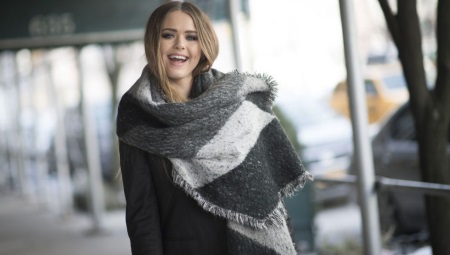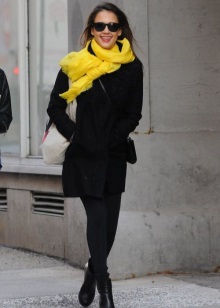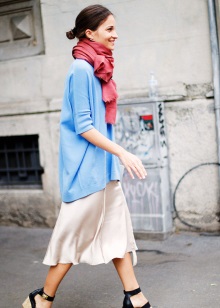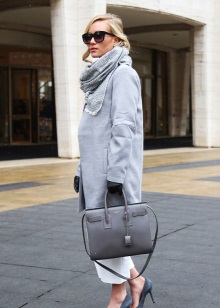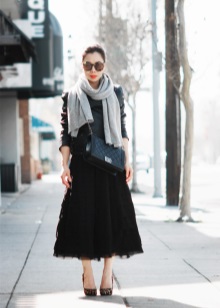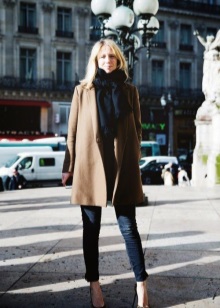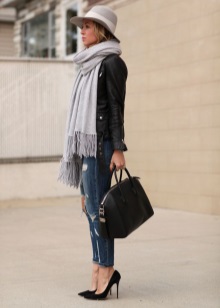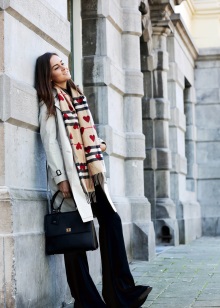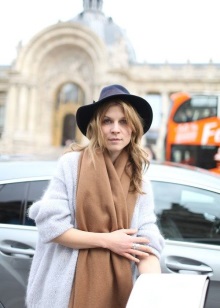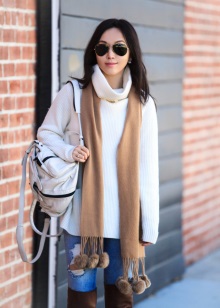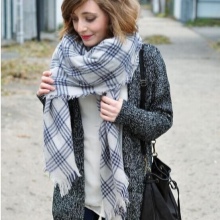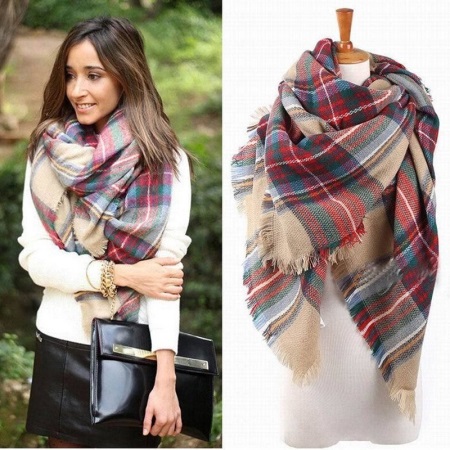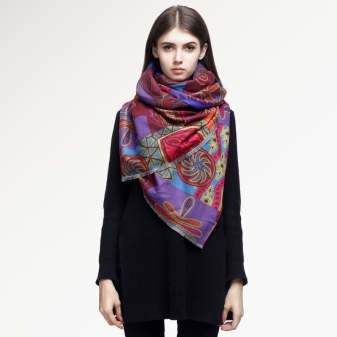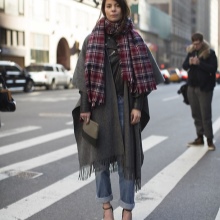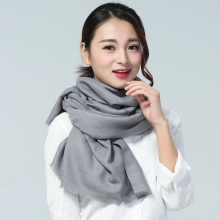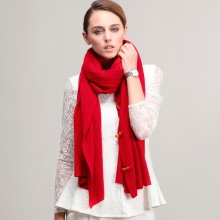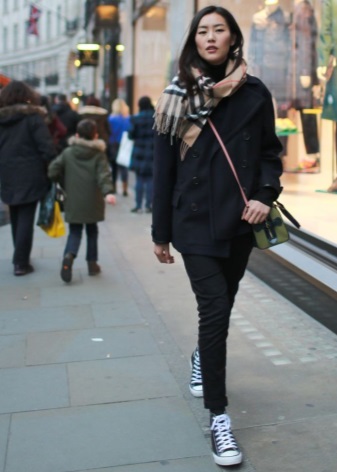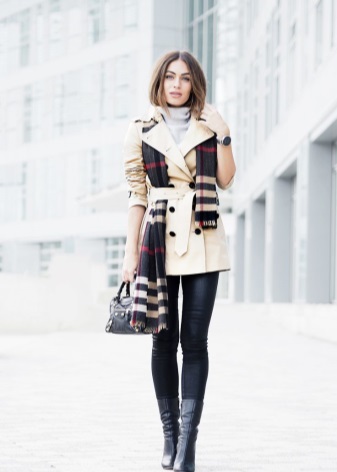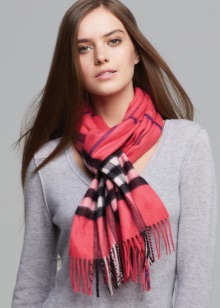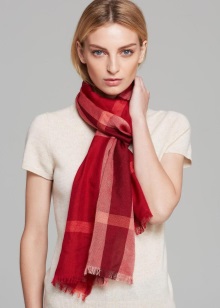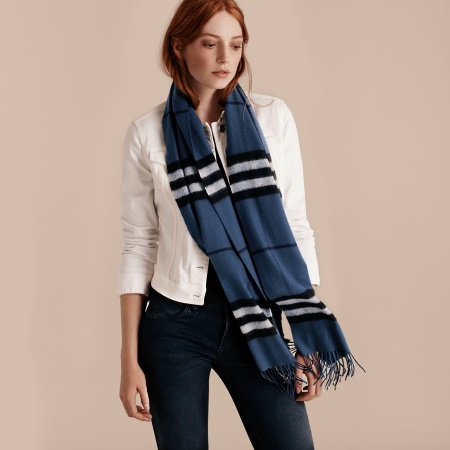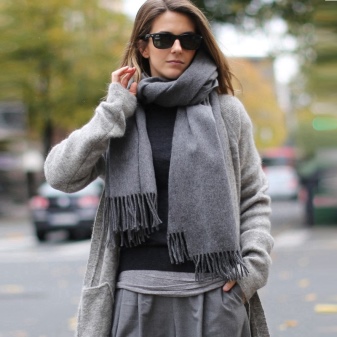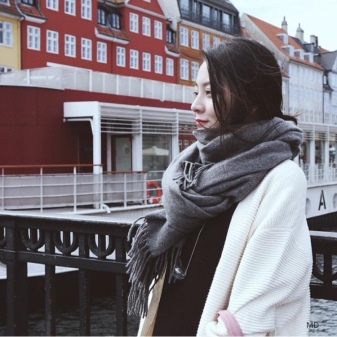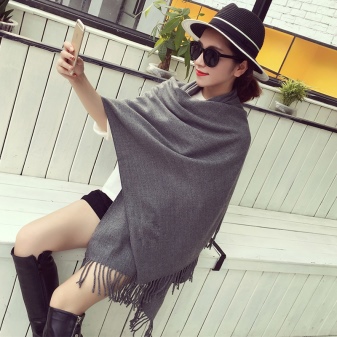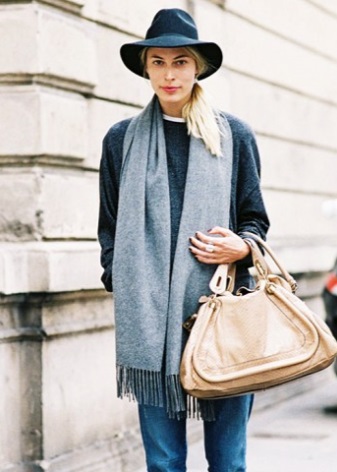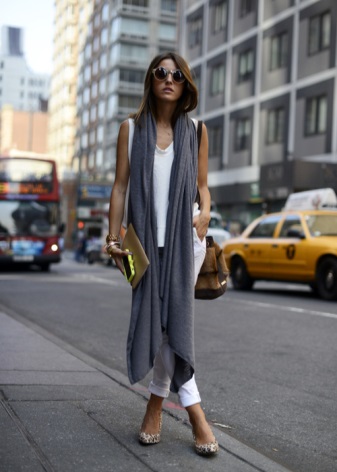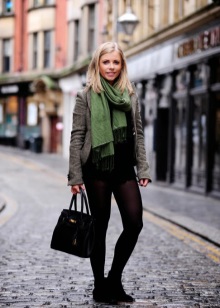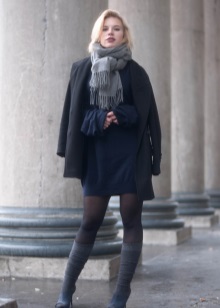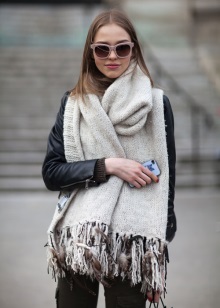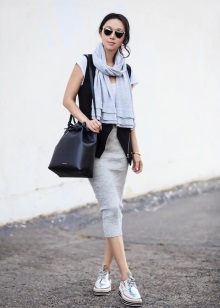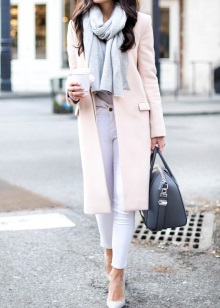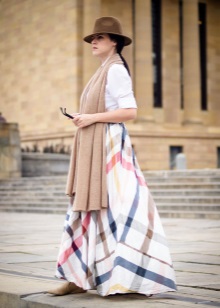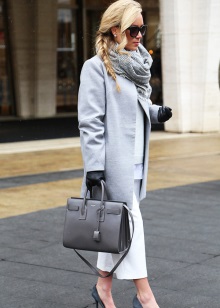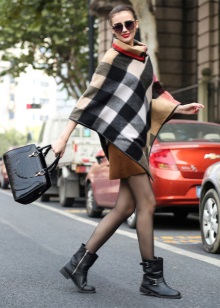A scarf is not only a necessary thing for autumn and winter not to freeze, but also a stylish fashion accessory. With it, you can add an image and emphasize it or even make it up, if you choose a long model. The most popular and affordable material is wool by right, but everyone still wants to have at least one cashmere scarf, because this product is first-class in quality and appearance.
Features
Cashmere, also known as wool gold, is an undercoat, a down of Himalayan goats or goats, depending on the category of material. Raw materials are harvested by hand, using the combing of animals during spring shedding, when there is no longer any fear that they will freeze. Goats, the undercoat of which is used, are bred in several countries, but not everywhere the raw materials are equally good.
The best material is the one that is assembled in China and Mongolia, and in Iran, India and Afghanistan it is a little more rigid.
Due to the fact that raw materials are not so common, and because of the manual technology of collecting undercoat, cashmere products, including scarves, are expensive.
There are two types of this material: cashmere itself and more elite, rare and expensive - pashmina, which is distinguished by subtlety.
Cashmere is a bit thicker than pashmina and at the price it is not as expensive, and yet its value is higher than that of ordinary wool scarves. That is why large and famous fashion houses have collections with cashmere scarves.
Cashmere products, although quite thin, are actually very warm, and at the same time their weight is small. In addition, this material is very pleasant to the touch, soft, does not cause allergies and irritation, does not prick.
In case silk is added to cashmere, the scarf is smooth, with a special shine, and cheaper. Silk is added precisely in order to reduce the price of the product and increase wear resistance. But even without cash cashmere can last for many years, while maintaining an excellent appearance, as it does not roll.
Fashion trends
A scarf is a rather simple product that is a strip of fabric tied around the neck. They can be of different lengths: from the shortest, when the scarf is carefully slung around the neck, or long, the edges of which hang down to the knees.
The shape is square, rectangular, triangular. The tips of the scarves can end in a fringe. Despite the simplicity, fashion trends for this product may vary from season to season.
Beyond time and trends, the classic rectangular scarf of medium length from cashmere remains. Such a scarf will suit any image: not only classical and business, but also romantic. Fortunately, the cashmere scarf is warm enough to wear it not only in the fall, but also in the winter. Those who are cold can choose thicker scarves, not light thin ones.
Among the styles this season, wide stoles and long scarves that are worn over outerwear, for example coats, or jackets and sweaters, are thrown over shoulders. Often, such a model becomes the main accent of the image, and to look more stylish, its edges can be tucked under a thin strap.
Most often cashmere scarves have a natural color - black, beige, sand, white is a chic rarity. In such shades, the product looks the most natural, but many designers prefer to paint their creations in bright colors. Popular red, pink, turquoise, green, purple.
We should also talk about prints, because scarfs are very popular geometric checkered patterns, for example, the brand Burberry.Of course, there are other patterns on cashmere scarves, but much less often, and one of the fashionable novelties was putting their initials with embroidery.
Tips for choosing
Cashmere is considered an elite material, products made of it are quite expensive, but still it is a desirable acquisition for many women and men. The presence of demand increases the chance to face a fake. A logical question is brewing: how to choose a good scarf? To avoid buying low-quality goods, you should know a few rules.
- Oddly enough, but first of all you should pay attention to the price. Natural material from down of goats gathers manually, due to what the final cost of a finished product increases. It should be quite high, above average, compared to wool. Therefore, a cheap "cashmere" scarf, most likely a fake or in its composition too many impurities.
- The appearance of a real cashmere should not be smooth and uniform, flat. It is quite textured, matte. A smooth and brilliant scarf will be only in the case of adding silk or, as indicated in the composition less often, synthetics. Cashmere is soft and gentle, should not leave unpleasant sensations when in contact with the skin, and begins to warm even after a short contact.
- The peculiarity of natural cashmere is that it is colored, it can not be too bright. Paint the material by hand, but because of these natural colors, the resulting shade is a little smoky. Especially you should look at white scarves, as cashmere of this color is a rarity.
- You should even listen to the sound that makes a scarf, if you squeeze it a little. Synthetics emit a characteristic creaking, while natural cashmere - "quiet."
- It is enough to be vigilant and check the composition on the label of a scarf to make sure one hundred percent cashmere product in front of you, with natural impurities (wool and silk), or a synthetic product in which artificial materials are more than ten percent.
Care
In order not to harm the expensive beautiful scarf, you should know how to wash it properly. To begin with, you should check the label and find out what washing the manufacturer allows. We are talking about both manual and machine mode.
When washing in a typewriter, the water temperature should not be higher than forty degrees. Modes of washing and drying should be gentle, delicate, as well as detergents. It is best to purchase special powders or gels for cashmere and wool.
However, most often cashmere scarves are erased by hand. As in the case of machine wash, the water should not be very hot, just tepid. Use the best soft detergents.
The squeezing process is important, since cashmere cannot be rubbed or twisted. You should gently squeeze the foam and rinse the product under water to get rid of the remnants of all cleaning products. Cashmere should not be left wet; it should be squeezed out carefully, but carefully, otherwise it may acquire an unpleasant smell and attract the attention of moths.
Care should be taken when drying. Washed cashmere can not be stretched, and, accordingly, it should not be dried, hanging on a hanger or clothesline. It is best to lay it on a flat surface on top of a towel for natural, natural drying. In no case can not place a scarf next to the battery or on a sunny plot.
After the scarf is dry, you should remove the pellets, if a small amount of them appeared after washing. To smooth out small bruises, you should walk on the canvas with a cold iron, pressing irregularities.
